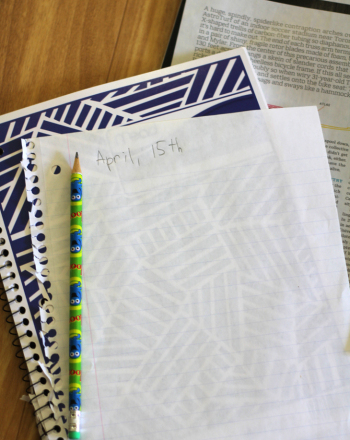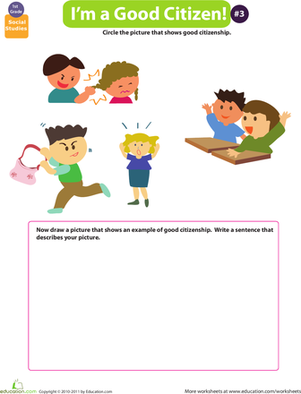Science project
Good and Bad Lipids
Type
Grade Level
Middle School (grades 6 -8)
Difficulty of Project
Cost
Safety Issues
Iodine is irritating to eyes, respiratory system and skin and stains hands and clothes. Iodine is toxic, harmful if inhaled or swallowed and the vapors may cause drowsiness and dizziness. The investigator should wear goggles, work in a well ventilated area, and follow safety precautions when using iodine.
Material Availability
The materials required for this project are readily available and inexpensive.
Approximate Time Required to Complete the Project
1 to 2 hours to complete the activity once the materials are secured and setup. Also between 1 and 2 hours to prepare the Tri-fold board display.
Objective
This project focuses on saturated and unsaturated lipids (fats and oils). Diets high in saturated fat are linked to high blood cholesterol levels and heart decease. High-fat diets can also increase the risk for obesity and cancer. The research aspect of this science fair project is to use a simple iodine test to determine if several common lipid products are saturated or unsaturated.
The young investigator will test if a lipid is saturated or unsaturated by adding iodine to various substances. If the iodine changes from brown to clear the lipid is unsaturated. If the iodine does not change colors the lipid is saturated. From the observations made data tables will be generated and the results displayed in the form of a graph.
The practical application from the results of this project is to reinforce the idea that as part of a healthy diet we should try to reduce the amount of saturated lipids and trans-fats we eat and replace them with unsaturated lipids.
Materials and Equipment / Ingredients
Eight test tubes, small graduate cylinder, Tincture of iodine, vegetable oil, distilled water, butter, margarine, fish oil, olive oil, corn oil, and sunflower oil.
The oils, butter, margarine, and distilled water can be purchased from the local supermarket. Tincture of iodine is available from any drug store or the pharmacy department of most major retail (Wal-Mart, Target, etc) stores. Test tubes and a small graduate cylinder may be borrowed from a high school or college chemistry teacher, found in toy chemistry sets, or purchased from a hobby shop.
Introduction
Fats, oils and waxes belong to a group of compounds called lipids. Fats and oils have the same chemical structure. Fats that are liquid at room temperature are called oils. Fats and oils are insoluble (do not dissolve) in water. The cell membrane is made up of lipids and proteins.
Fats and oils are made-up of two kinds of molecules, glycerol and fatty acids. Three fatty acids are bonded to one glycerol to form a lipid called a triglyceride.

Each fatty acid is made of a chain of carbon atoms with hydrogen atoms attached. There are two kinds of fatty acid: saturated and unsaturated. Bonds between carbons may be single (C-C) or double (C=C). The presence of double bonds implies that the carbon chain of a lipid is not saturated with hydrogen atoms. That is, less than the maximum number of hydrogen atoms possible is bound to the carbon. The following diagrams illustrate saturated and unsaturated fatty acid lipids.

To test if a lipid is saturated or unsaturated iodine is added. If the iodine changes from brown to clear the lipid is unsaturated. If the iodine does not change colors the lipid is saturated.
Iodine + Lipid = brown color (saturated)
To test for the degree of lipid saturation iodine is added to the unsaturated lipid. The iodine will attach itself to one of the double bonds which causes de-colorization of the iodine. As shown in the illustration below.

Digital photos can be taken during the experimenting process and the following websites offer down loadable images that can be used on the display board:
- http://staff.jccc.net/pdecell/biochemistry/satvsunsat.gif
- http://ibchem.com/IB/ibfiles/bonding/bon_img/I2.gif
- http://journeytoforever.org/media/i/Iodinechart.jpg
Research Questions
- What is a lipid?
- What is the difference between a saturated and an unsaturated fat?
- Why is tincture of iodine a good indicator to use to test for the presence of unsaturated fats?
- Which of the tested lipids has the least number of double bonds?
- Which oil has the most number of double bonds (required the most number of iodine drops)?
- Based on the degree of saturation which lipid is a better choice to spread on food, butter or margarine?
- Which oil do you think is the healthiest?
- What was the control for this investigation and why was it chosen?
Terms, Concepts and Questions to Start Background Research
Lipids, fats, oils, glycerol, fatty acids, triglyceride, saturated fatty acid, unsaturated fatty acid, and Tincture of iodine
Experimental Procedure
- Put on gloves! Get the following supplies, test tubes, graduate cylinder, Tincture of iodine in a dropper bottle, vegetable oil, distilled water, butter, margarine, fish oil, olive oil, corn oil, and sunflower oil.
- Allow the solid fats to melt into liquids. The butter and margarine will melt just by placing them in the warmth of the radiant heat produced by sunlight.
- Place about 10 ml of each test oil and fat into separate test tubes. Prepare a control by pouring 10 ml of distilled water into a test tube.
- To each tube slowly and carefully add Tincture of iodine drop by drop, shaking the tube after each addition.

- If the iodine changes from brown to clear the lipid is unsaturated. If the iodine does not change colors the lipid is saturated. Record the results in a table similar to the one shown.
|
Test Sample Name
|
Saturated or Unsaturated
|
|
Water
|
|
|
Butter
|
|
|
Margarine
|
|
|
Olive oil |
|
|
Fish oil |
|
|
Corn oil |
|
|
Sunflower oil |
|
|
Vegetable oil
|
|
- For the lipids that are unsaturated, the degree of un-saturation can be determined by placing 10 ml the unsaturated lipids into clean tests tubes.
- To each tube slowly and carefully add the Tincture of iodine drop by drop, shaking the tube after each addition.
- The iodine should be added just until the point when it changes from a brown color to clear. Record the number of drops needed to bring about full de-colorization.
- The number of drops required to turn the iodine clear indicates that all the double bonds in the oil and/or fat have reacted with the iodine.
- For a more scientifically accurate investigation the entire processed should be repeated twice more. Record the results in a table similar to the one shown below.
|
Unsaturated Lipid
|
Iodine Number |
|||
|
Sample Name |
Trial 1
|
Trial 2
|
Trial 3
|
Average of Trials
|
|
(Olive oil, example) |
|
|
|
|
|
|
|
|
|
|
|
|
|
|
|
|
- The degree of lipid saturation for the samples tested can be displayed in graphical form. Using the data in the table plot a bar graph of the average iodine discoloration numbers along the to the Y-axis verses the names of the various unsaturated lipids along the X-axis.
Bibliography
Title: Complete Fats and Oils Book, Author: Lewis Harrison, Publisher: Avery Press, ISBN-10: 0895297051 and ISBN-13: 978-0895297051
Title: Fat Chance: Surviving the Cholesterol Controversy and Beyond, Author: Dennis Willmont, Publisher: Willmountain Press, ISBN-10: 0974125733 and ISBN-13: 978-0974125732
This book explains and demystifies fats and oils and the different terms used for them. Fats and oils are then discussed in relation to relevant disease categories including liver, heart, and circulatory disease.
Note: The Internet is dynamic; websites cited are subject to change without warning or notice!
Education.com provides the Science Fair Project Ideas for informational purposes only. Education.com does not make any guarantee or representation regarding the Science Fair Project Ideas and is not responsible or liable for any loss or damage, directly or indirectly, caused by your use of such information. By accessing the Science Fair Project Ideas, you waive and renounce any claims against Education.com that arise thereof. In addition, your access to Education.com's website and Science Fair Project Ideas is covered by Education.com's Privacy Policy and site Terms of Use, which include limitations on Education.com's liability.
Warning is hereby given that not all Project Ideas are appropriate for all individuals or in all circumstances. Implementation of any Science Project Idea should be undertaken only in appropriate settings and with appropriate parental or other supervision. Reading and following the safety precautions of all materials used in a project is the sole responsibility of each individual. For further information, consult your state's handbook of Science Safety.















